Münster a city of incredible history, a tower keeper and one or two cyclists
Ahh, Münster, Germany, isn’t it wonderful when a charming city lives up to your expectations? and Münster in the Westphalia, did just that?
Attractive gabled buildings along the cobbled street of Prinzipalmarkt, the eye-catching central cathedral, St. Lambert's Church and a beautiful Gothic Rathaus. Ohh, and that was just the start.
Münster, Germany, is perfect for a weekend break any time of the year; however, if you love discovering Germany at yuletide, then visit Münster's Christmas Markets.
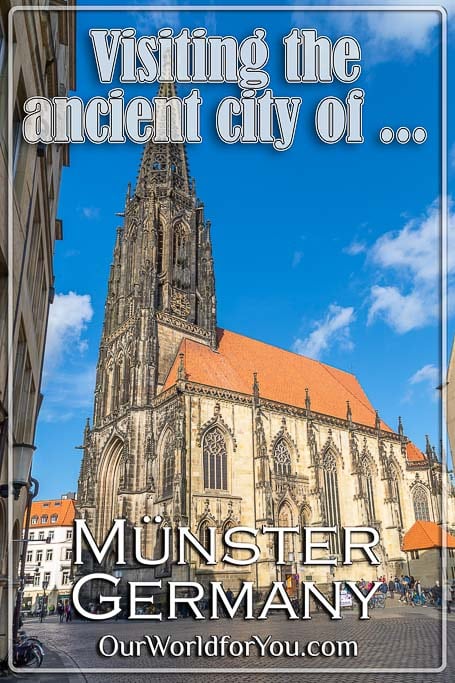
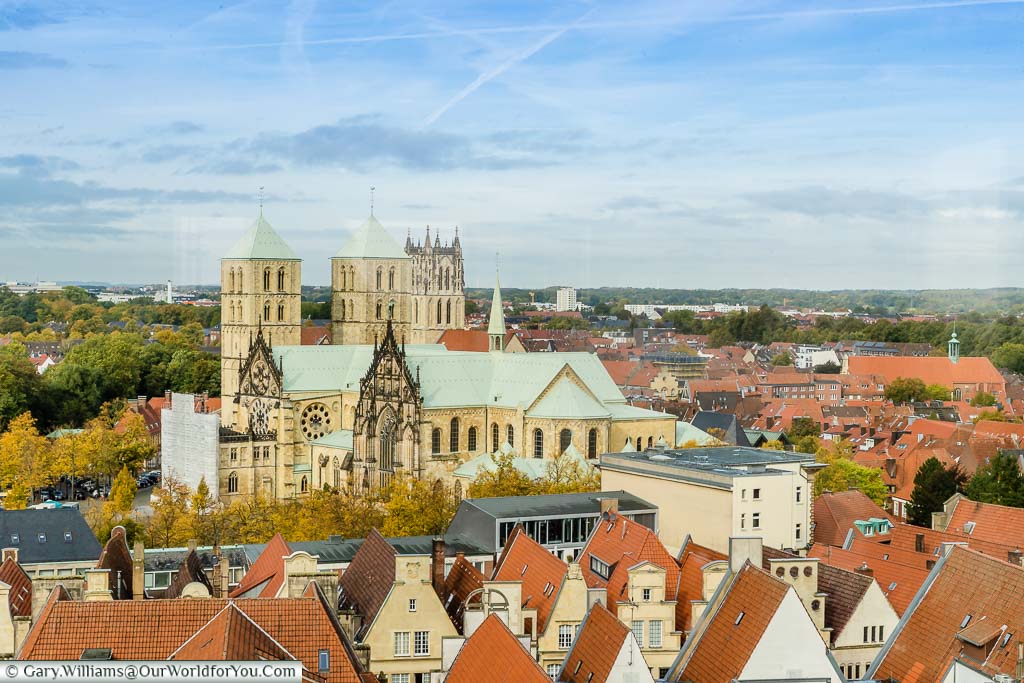
Where is Münster
How to get to Münster
- By Air
Start creating your own Münster adventure and discover the ancient history amongst the charming city streets.
Search for your flights in one easy place with ebookers.com. Over 400 airlines are scanned for your favoured routes and chosen dates. Then hop on a train for around 1 hour, and you’re there.
- By Car
If your venturing from the UK, jump on Le Shuttle and tour to Münster under your own steam.
Alternatively, it’s so easy to visit on a road trip. Rental Cars searches multiple well-known car hire brands and discovers the deals that suit you the best.
Why not stopover in Aachen on the way?
Discovering Münster
It starts with a city tour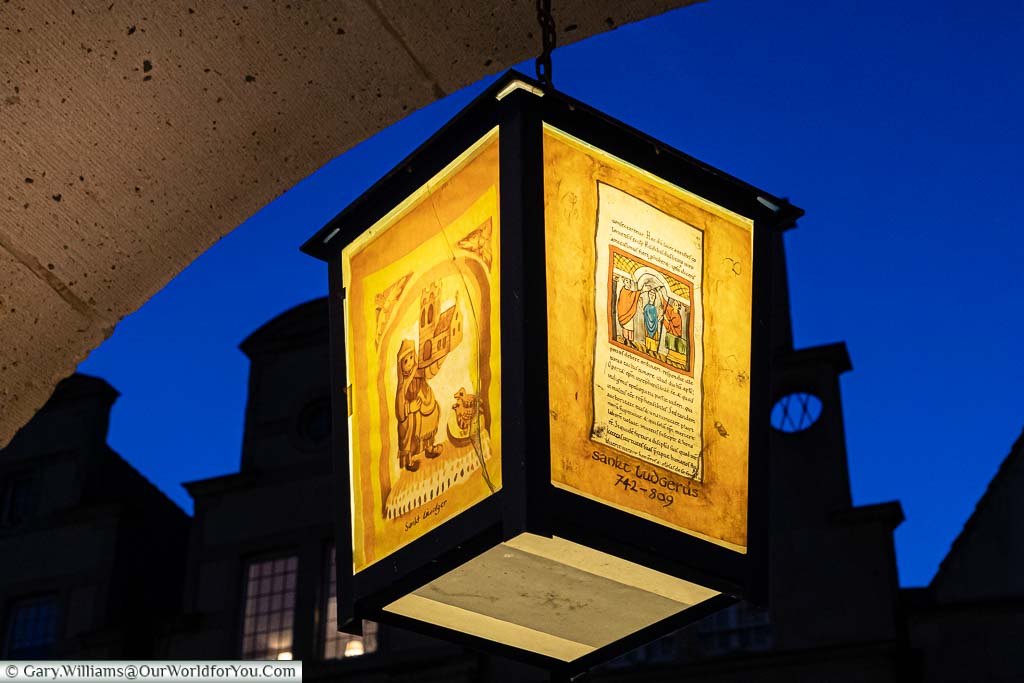
Our tour was organised through Münster Marketing with Annette from Stadt-Lupe.
Annette, our guide, took us on an incredibly interesting informal tour of Münster.
Explaining how the centuries of history, intrigue and turmoil shaped Münster into the friendly city, it is today.
Things to do in Münster
- Visit St Paulus Dom: - get your timing right to here the Astronomical clock chime
- Feel History in the "Hall of peace"
- Take in some culture at the LWL Museum, the Kunstmuseum Pablo Picasso or the Stadtmuseum Münster
- Don't miss the Tower Keeper at the St. Lamberti
- If the weather's fine head to Aasee Park
- Enjoy the city at Christmas
Grab your Münster Card
The History of Münster
Münster RathausMünster City’s town hall like in so many others in Germany cities takes pride of place in the heart of the town. Standing elegant and proud, Munster’s Rathaus has many stories to tell.
The gothic building has been lovingly restored in the 1950s to its original character from the mid-14th-century.
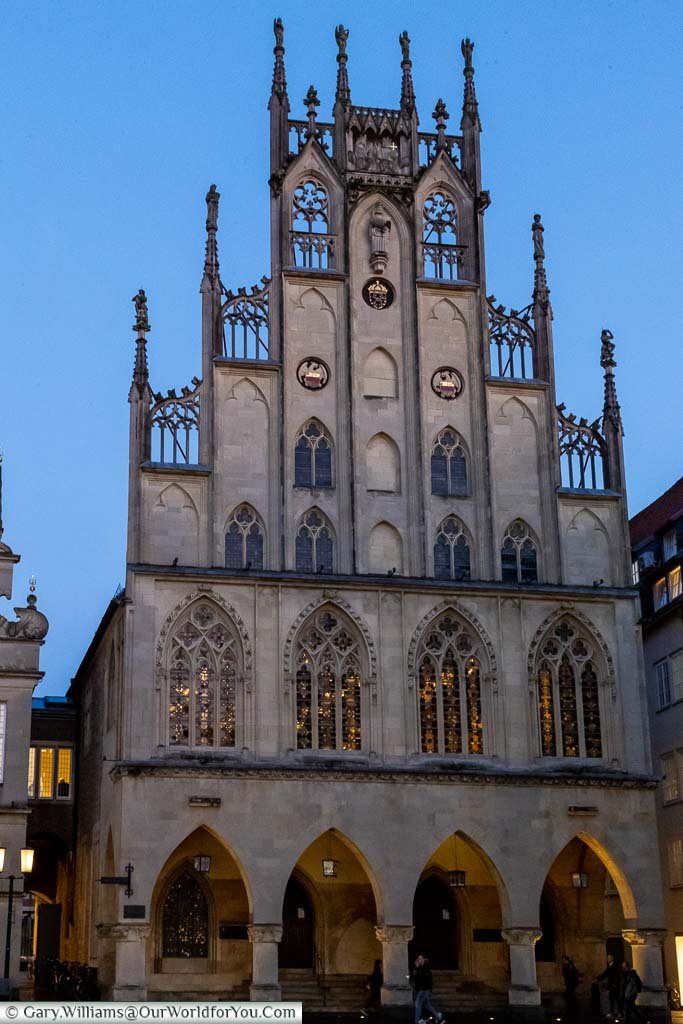
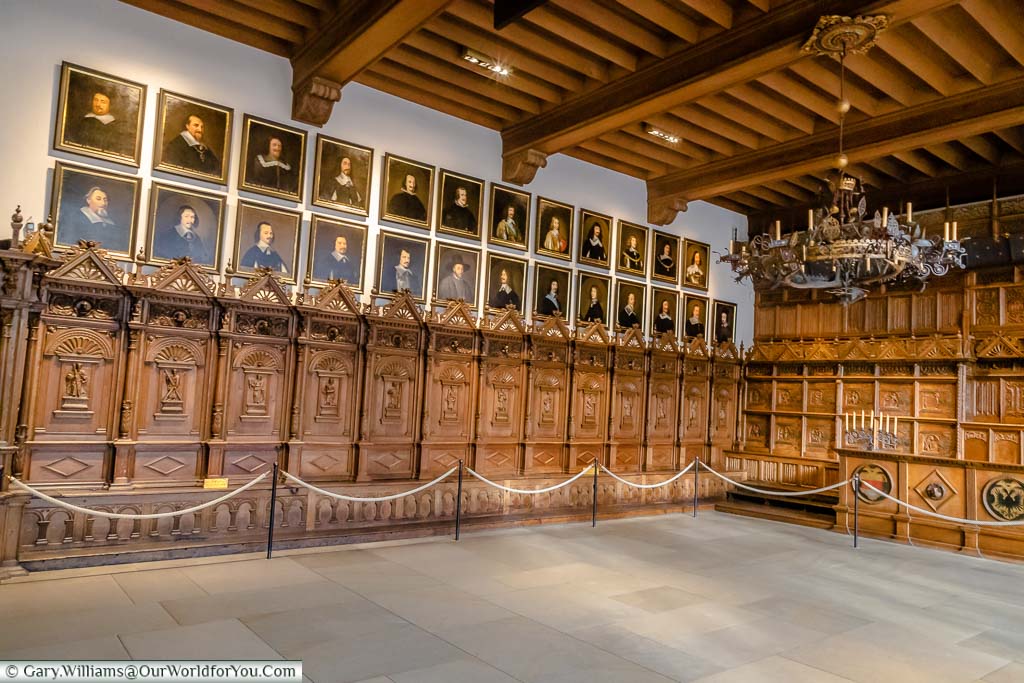
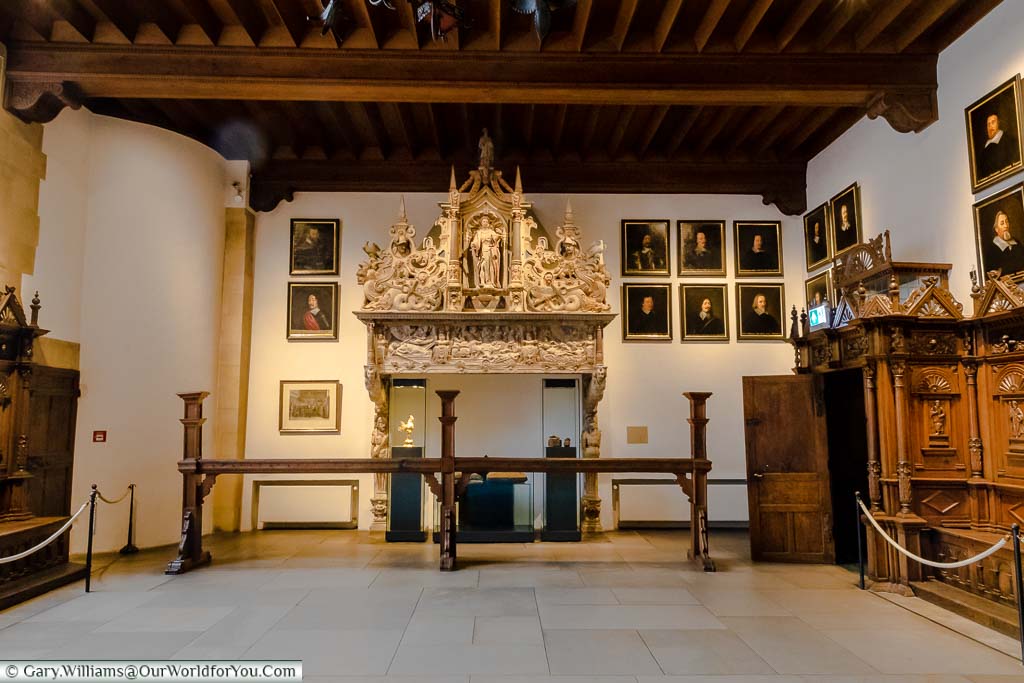
Reasons to visit Münster
Münster Stadtweinhaus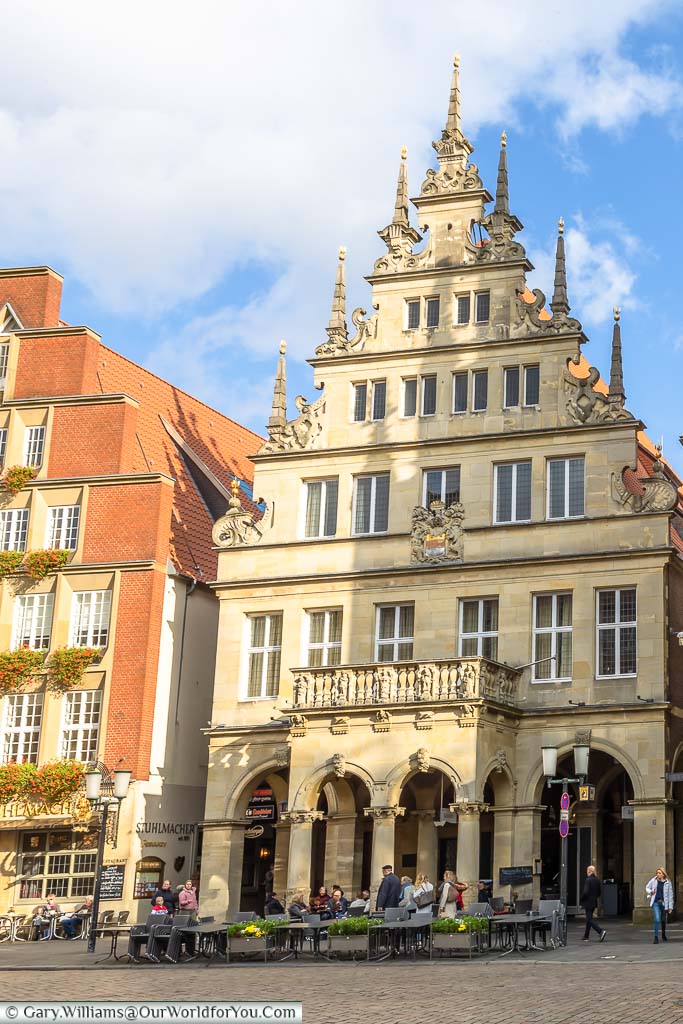
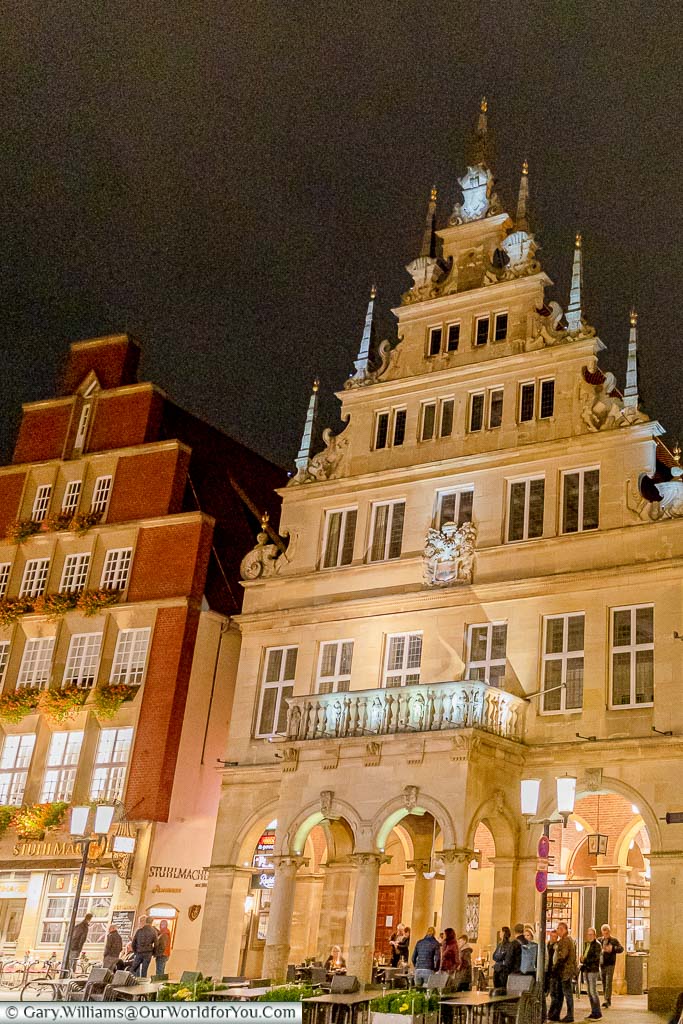
Münster Dom
The Cathedral with the special clock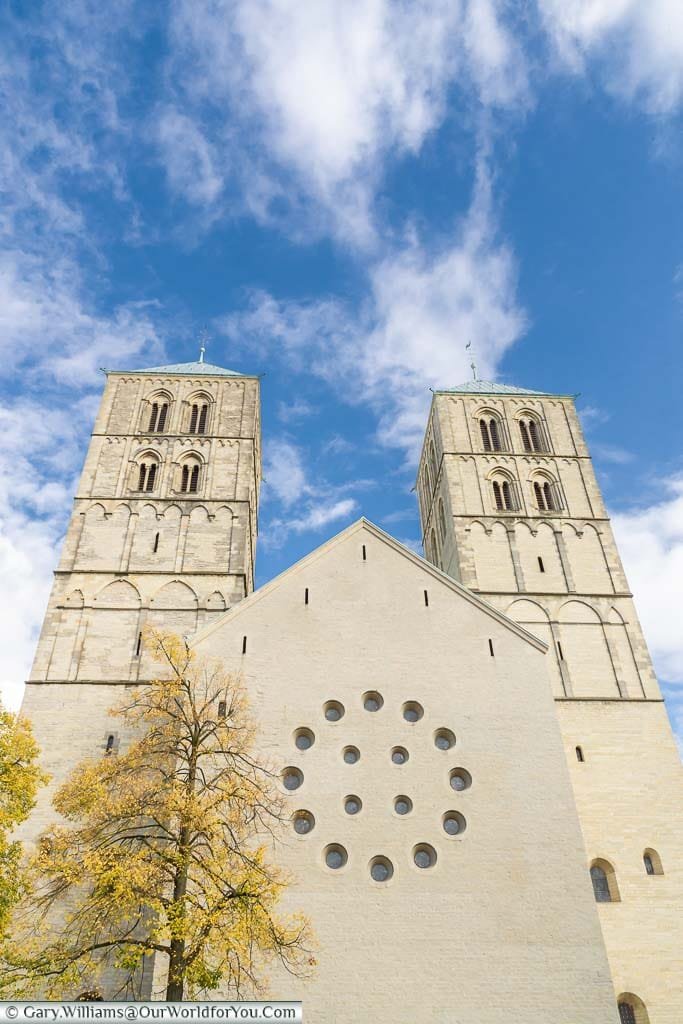
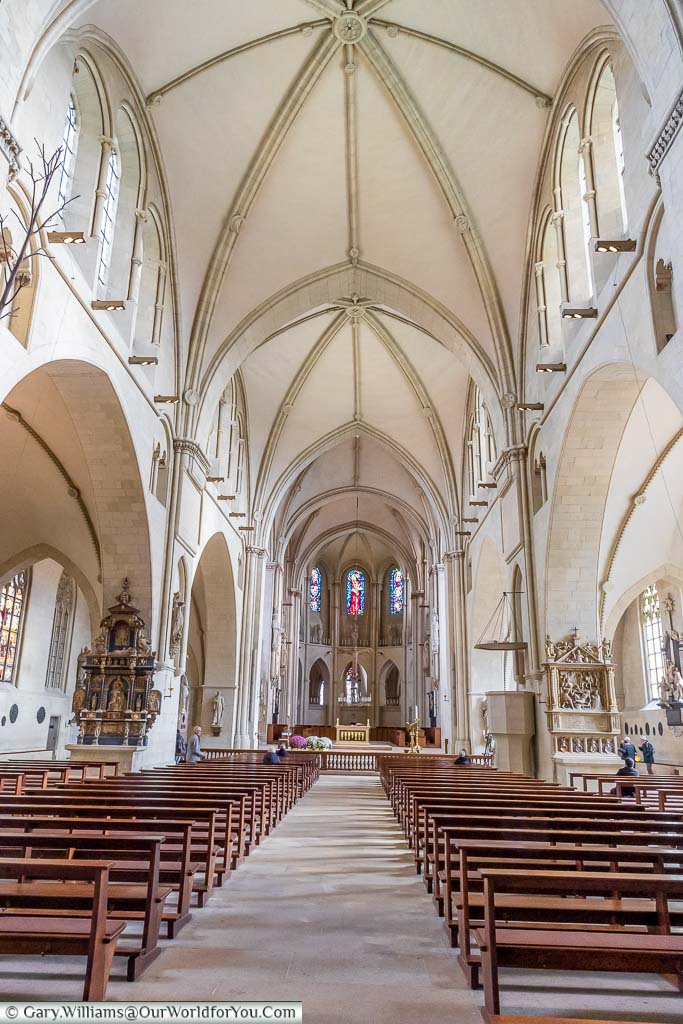
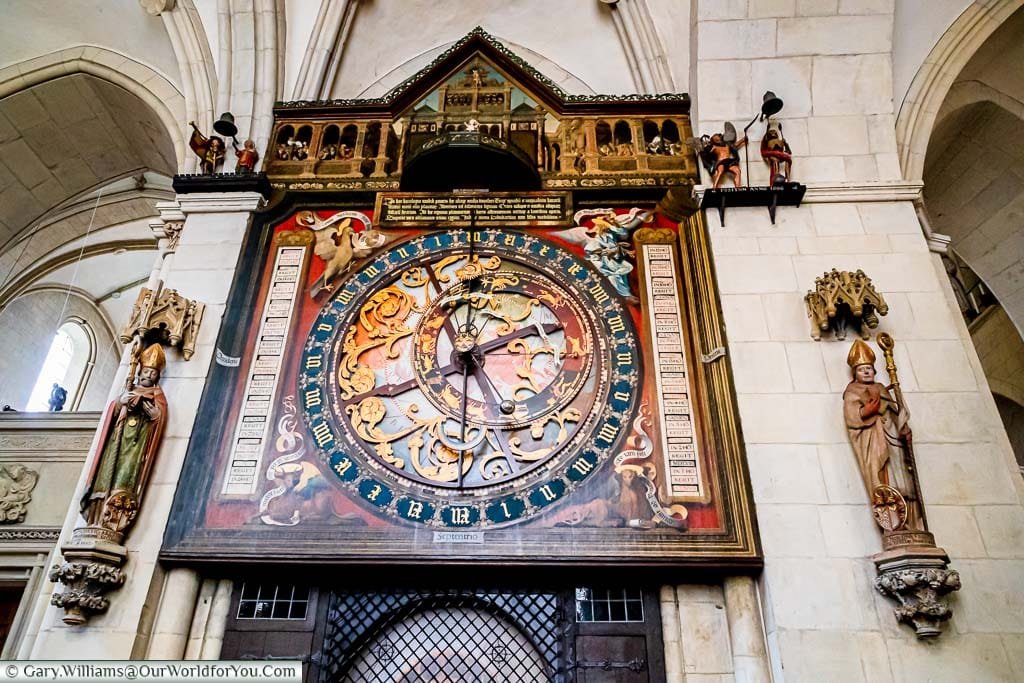
Market Day
Shopping in Münster
Münster PrinzipalmarktThe main street through Münster is the historic Prinzipalmarkt.
Lined with beautiful gabled buildings, this wide road would have always been a busy market street.
Full of locals purchasing their goods from merchants and market traders.
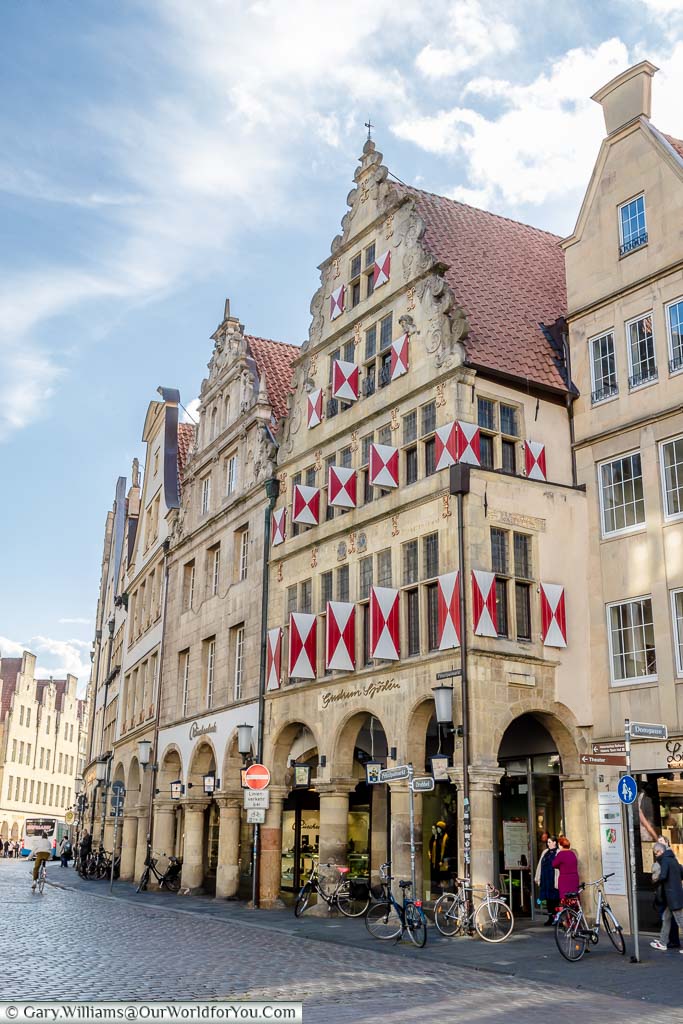
Giving Münster city’s Prince Bishop quite a resounding impression that the Münster townsfolk were building their own wealth.
Today you can still imagine how this prosperous city would have looked. The arched colonnades have upmarket, stylish stores lining the magnificent buildings, giving a feel of wealth and pride.
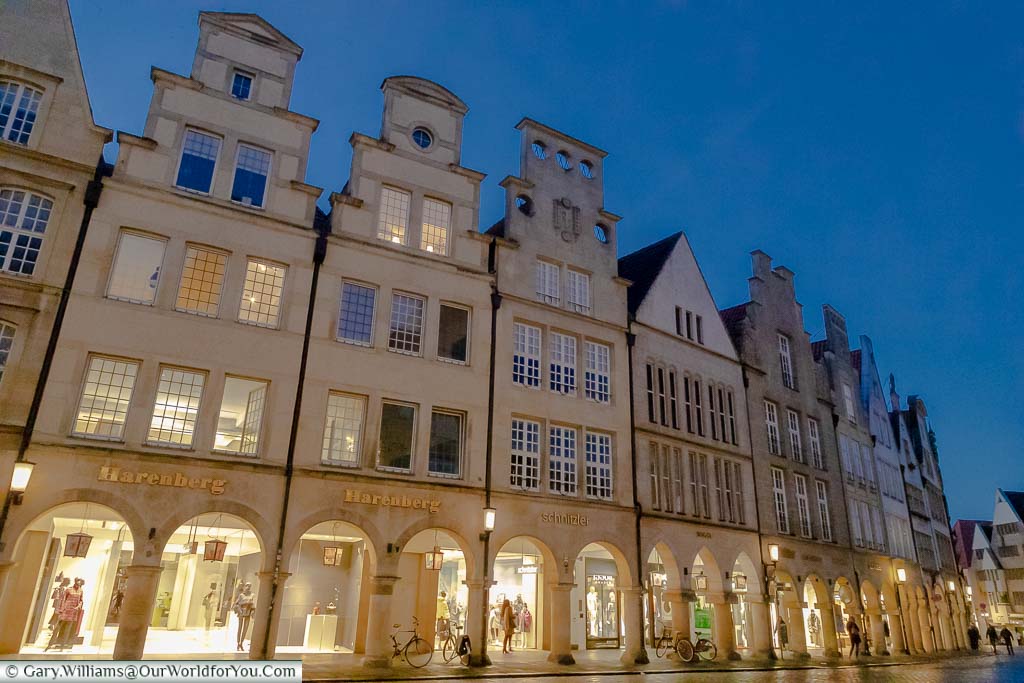
I love nothing more than planning a trip and so often I use the DK Eyewitness books. I find them extremely informative, easy to follow and the pictures and maps tempt you into discovering more.
We used a previous version of this book to plan our Germany road trips, now you can grab the revised copy.
Münster and the Anabaptist rebellion
St. Lamberti and its gruesome tales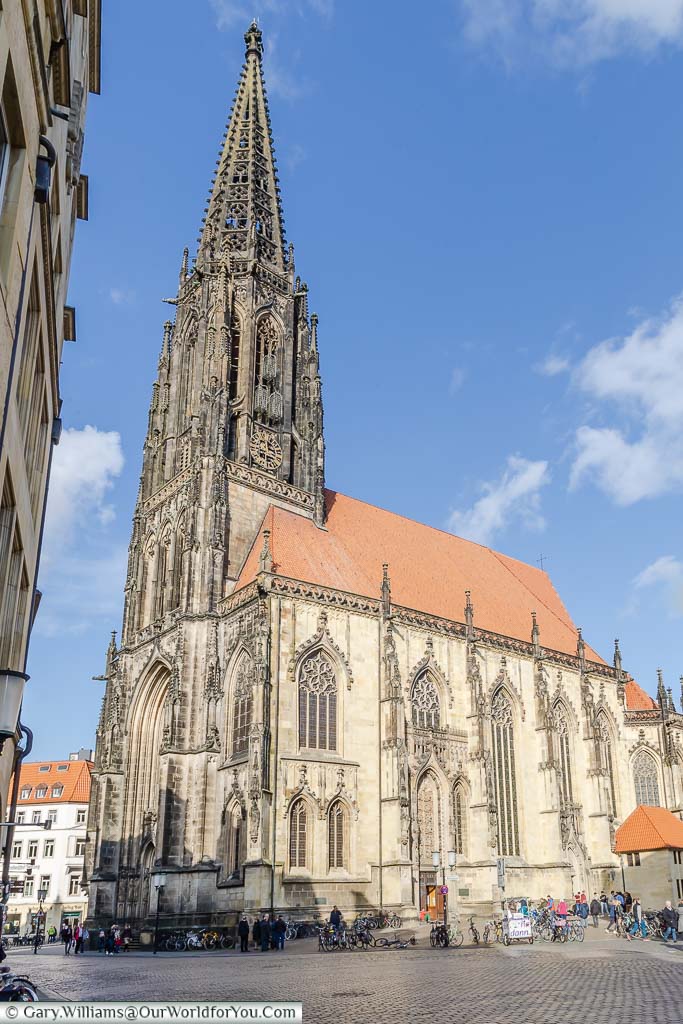
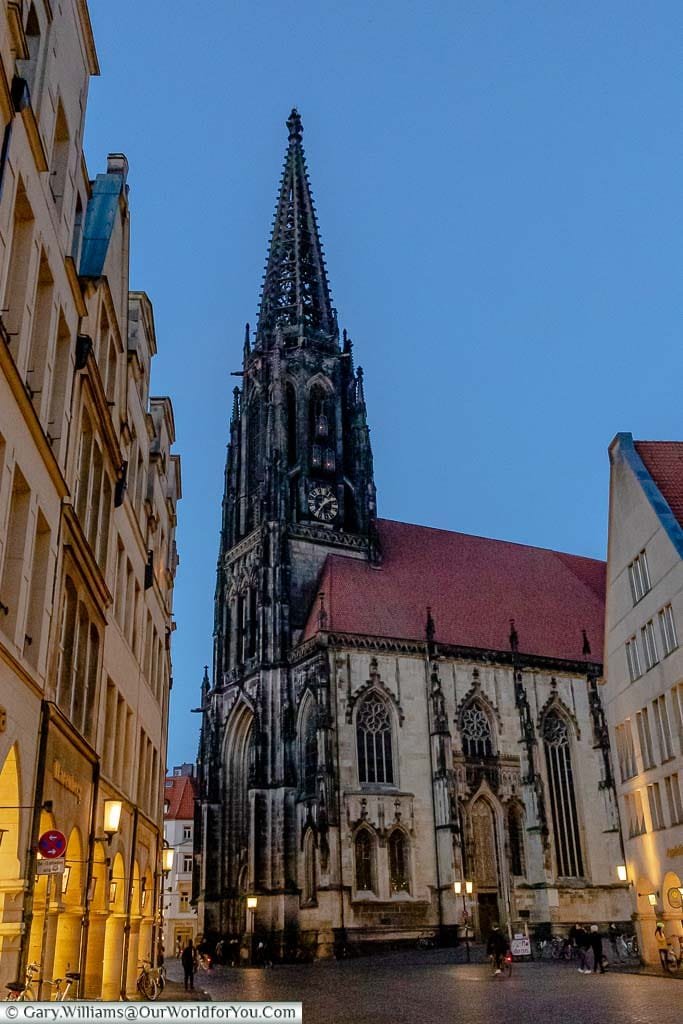
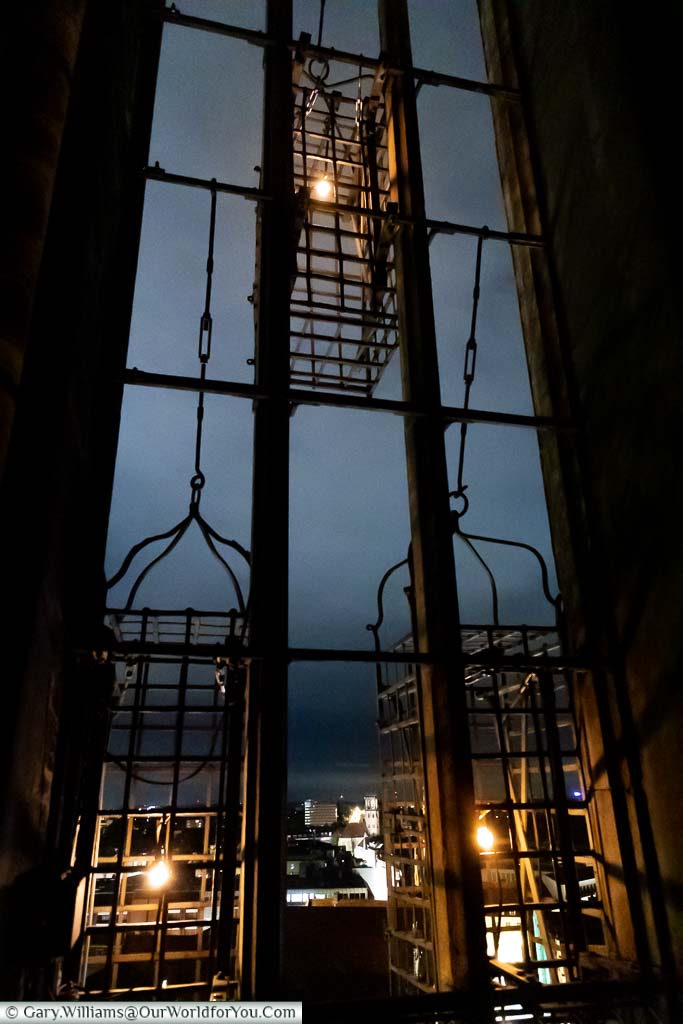
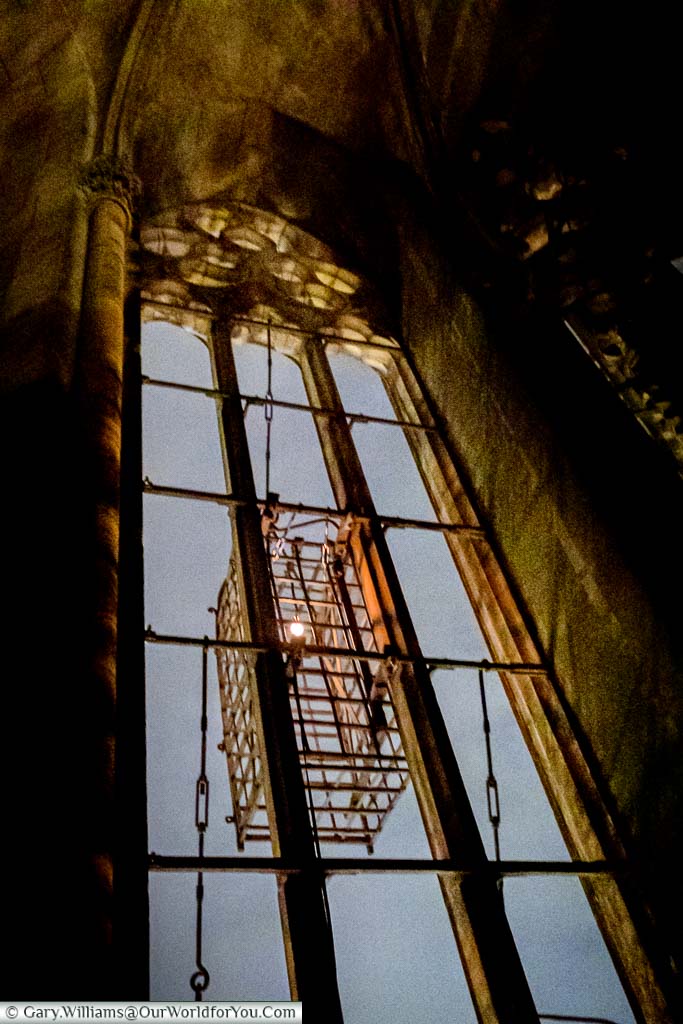
In the mid-16th-century, the Anabaptists tried unsuccessfully to convert Munster from Catholicism to Protestantism. Their bodies were then hung on display as an act of warning to the town.
The original cages remain and as part of the Munster city’s public art. In 1987 three faint lights were placed inside as part of the city’s art exhibition, to denote their three souls.
Maintaining traditions in Münster
Münster’s Tower Keeper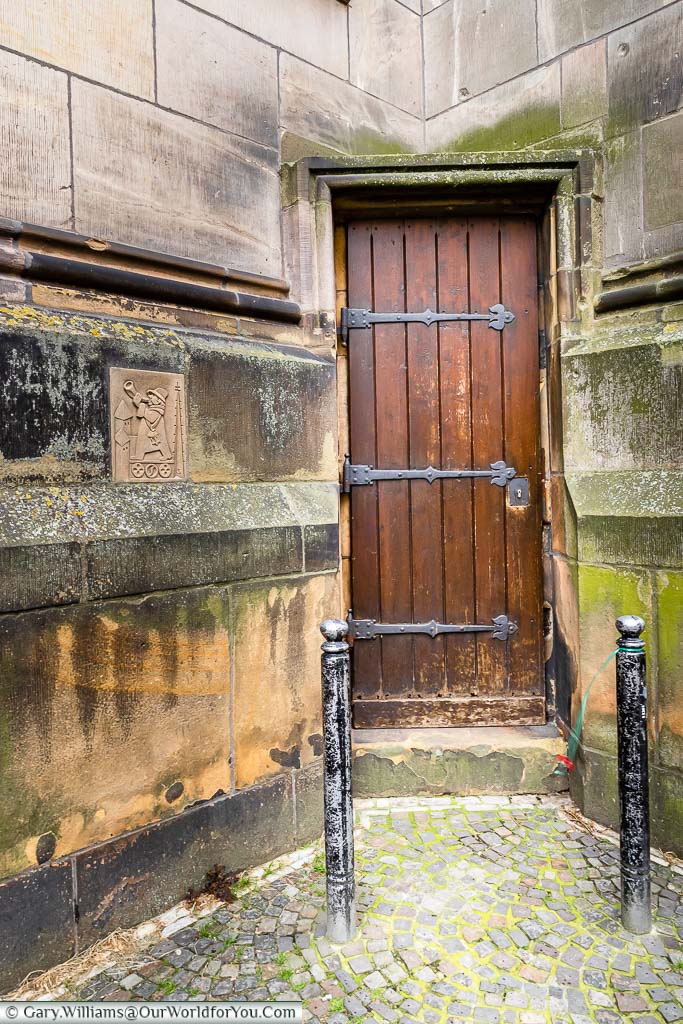
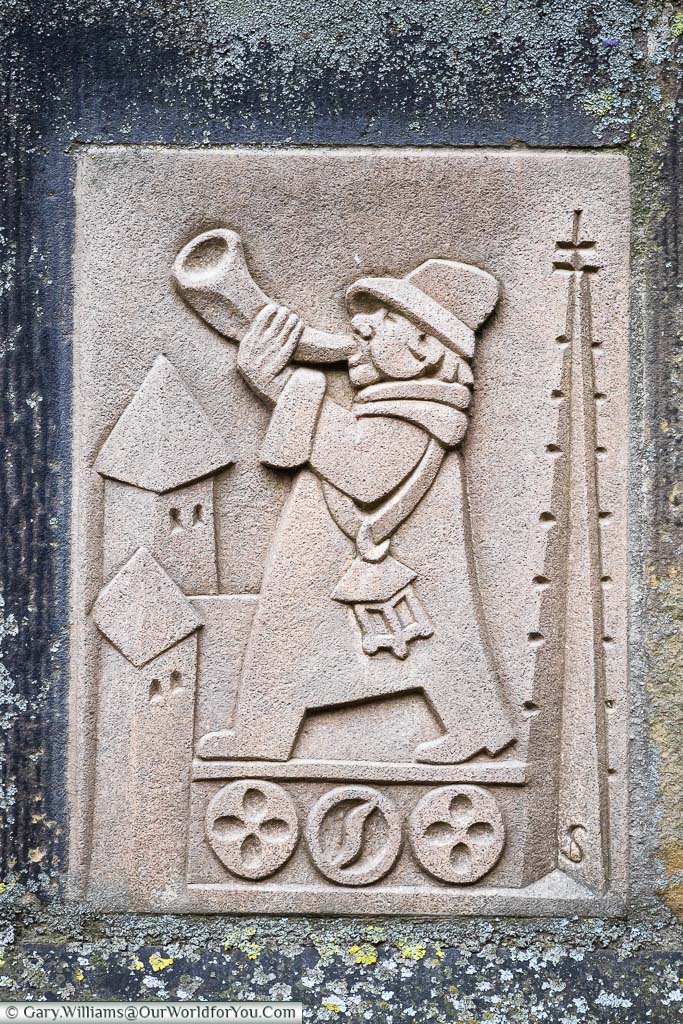
It was an incredible experience, even climbing the 300 spiralling stone steps. When we reached the top, it was magnificent and the night skyline across the city breath-taking.
When we chatted to Martje, she was completely honoured to have been given this historical role and privileged to be carrying on the tradition for Münster.
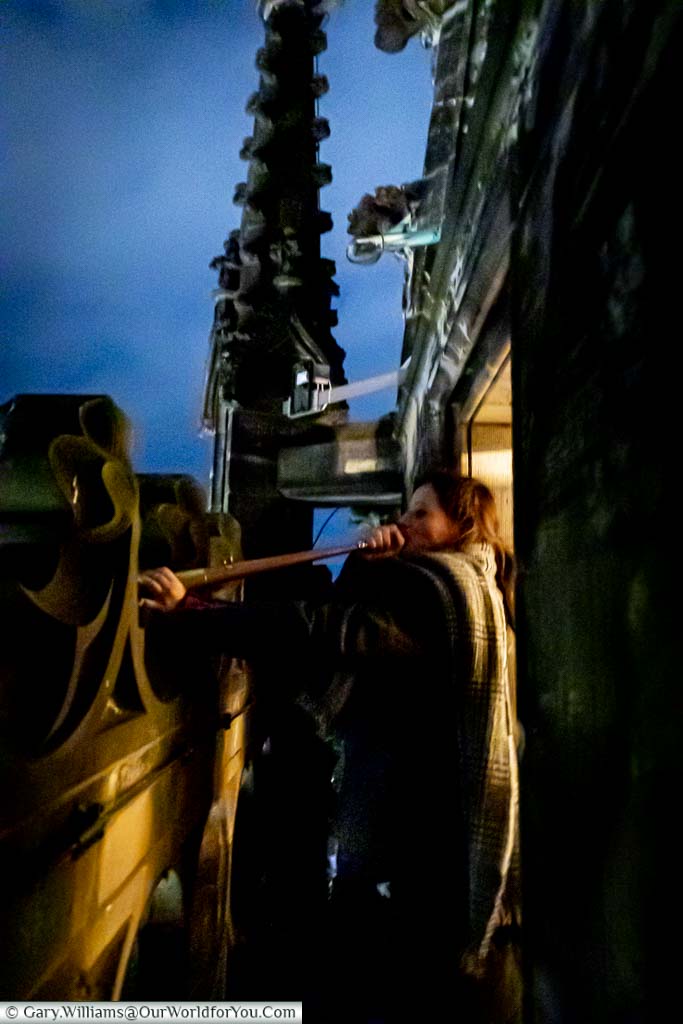
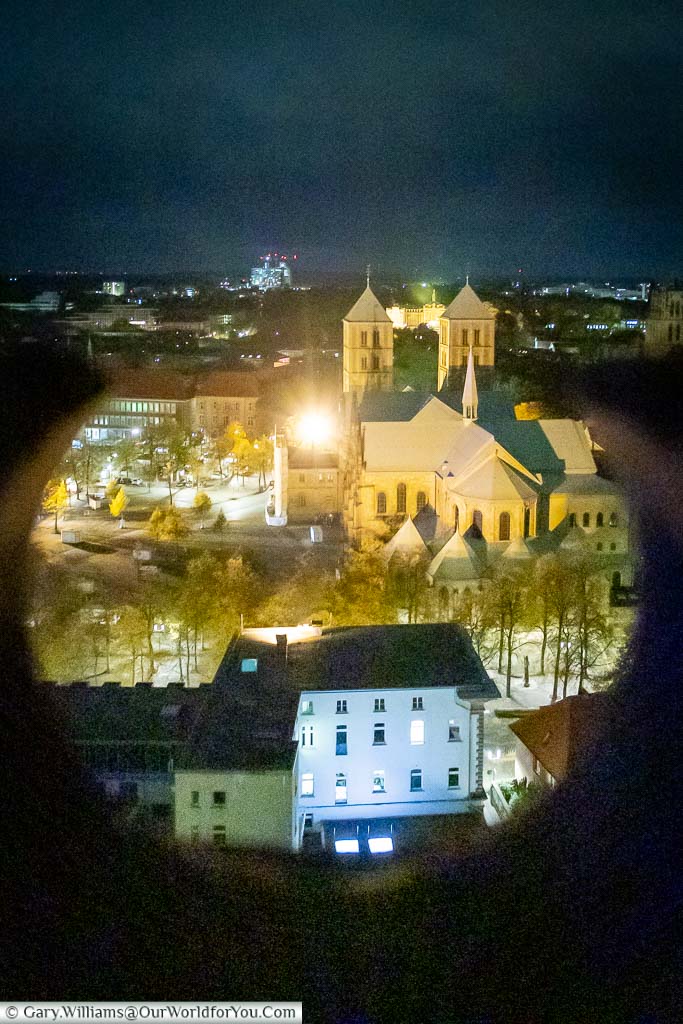
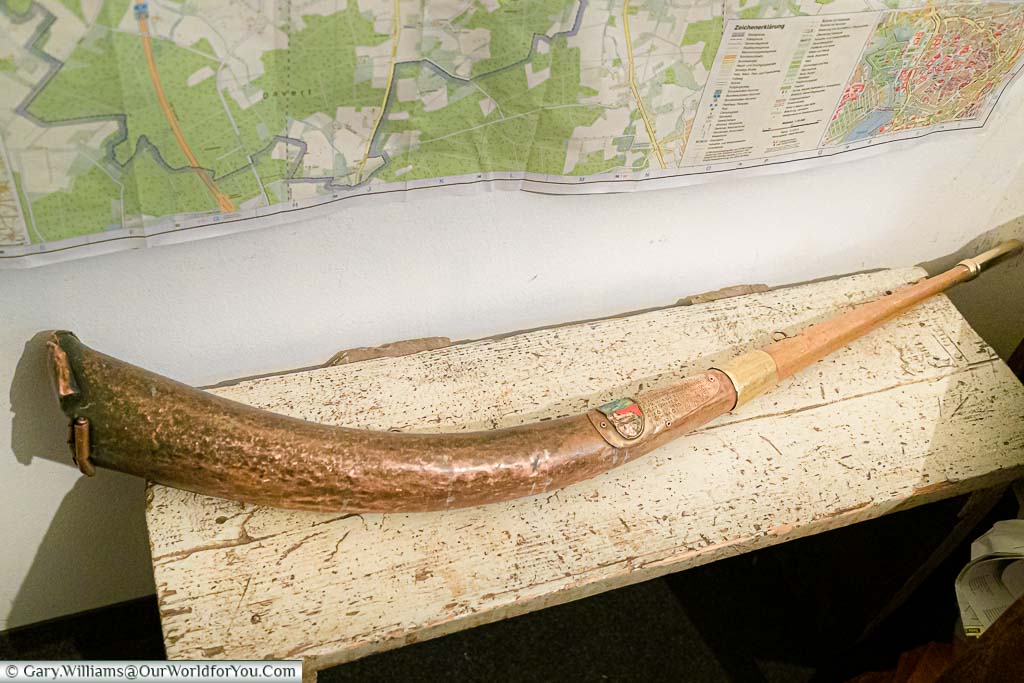
We peer over the top of the 246 feet (75 metres) vantage point.
As this is such an iconic tradition, we see people waiting in the streets below for Tower Keepers nightly call.
There’s more to Münster, Germany
Architecture & style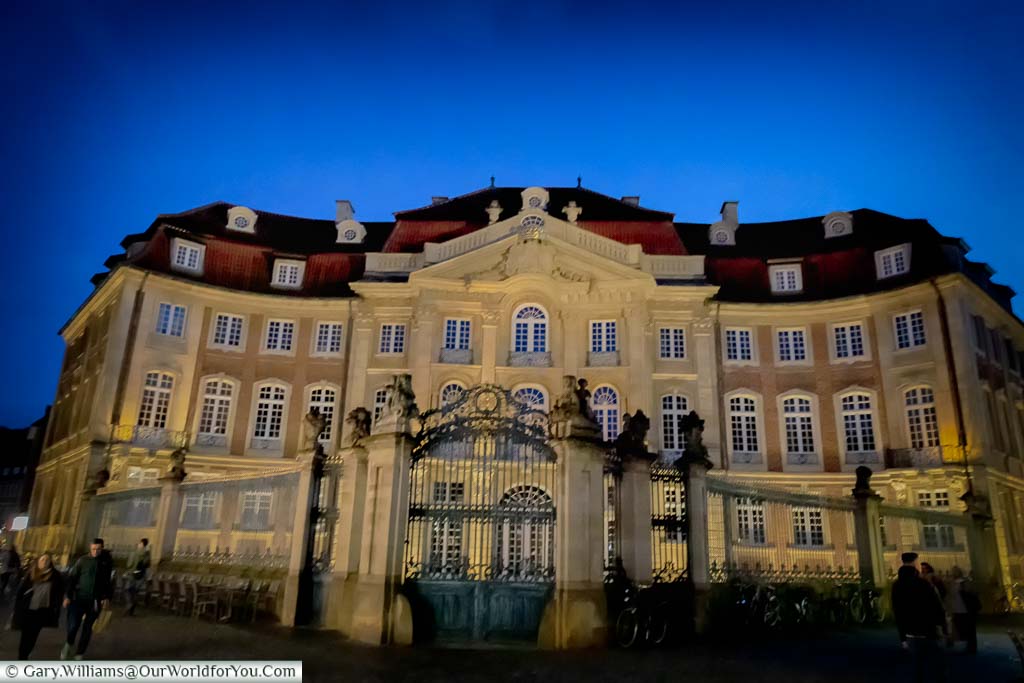
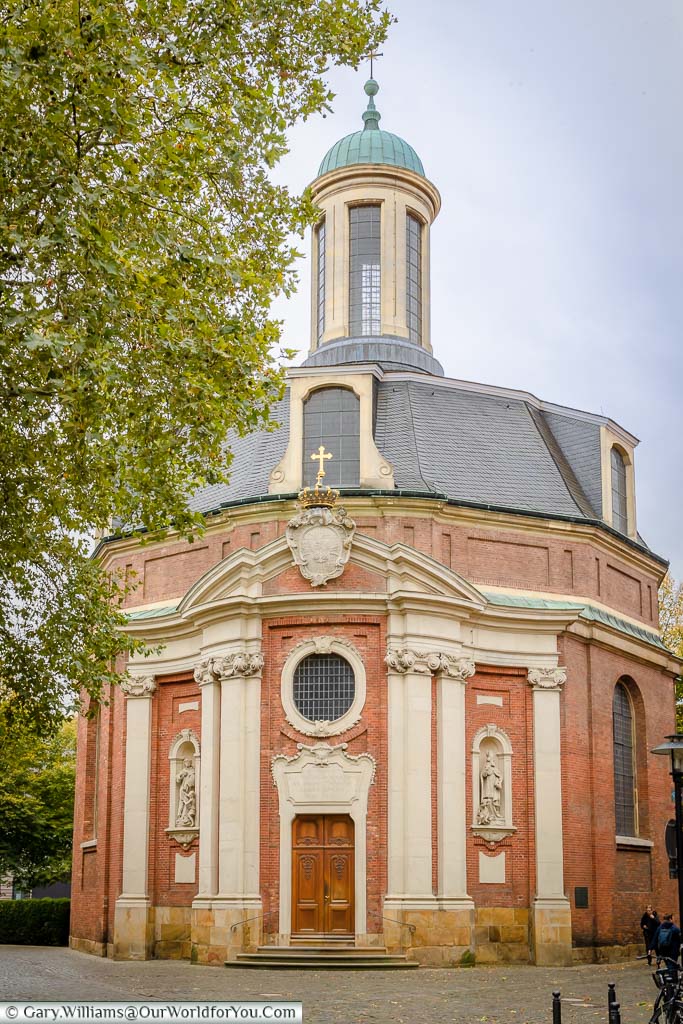
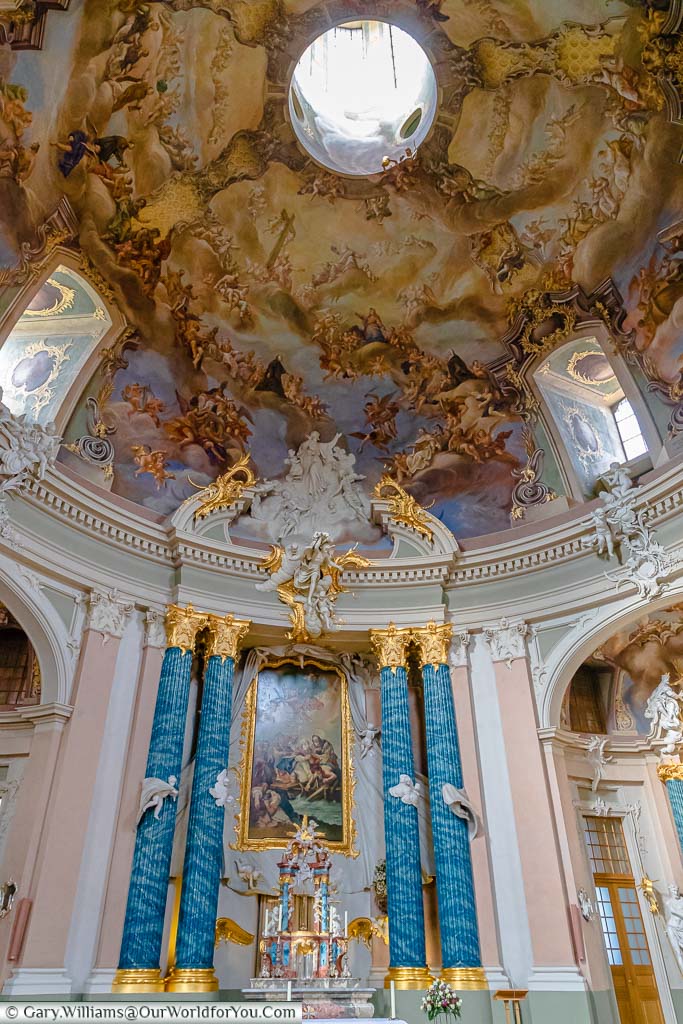
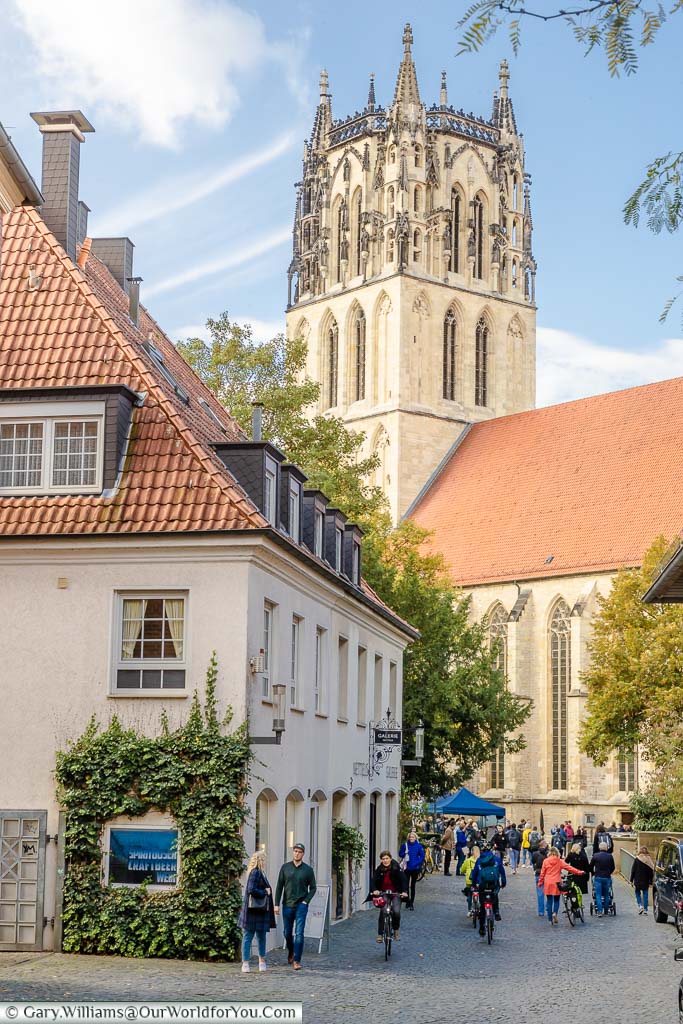
Münster's café with a view
Time for a coffee break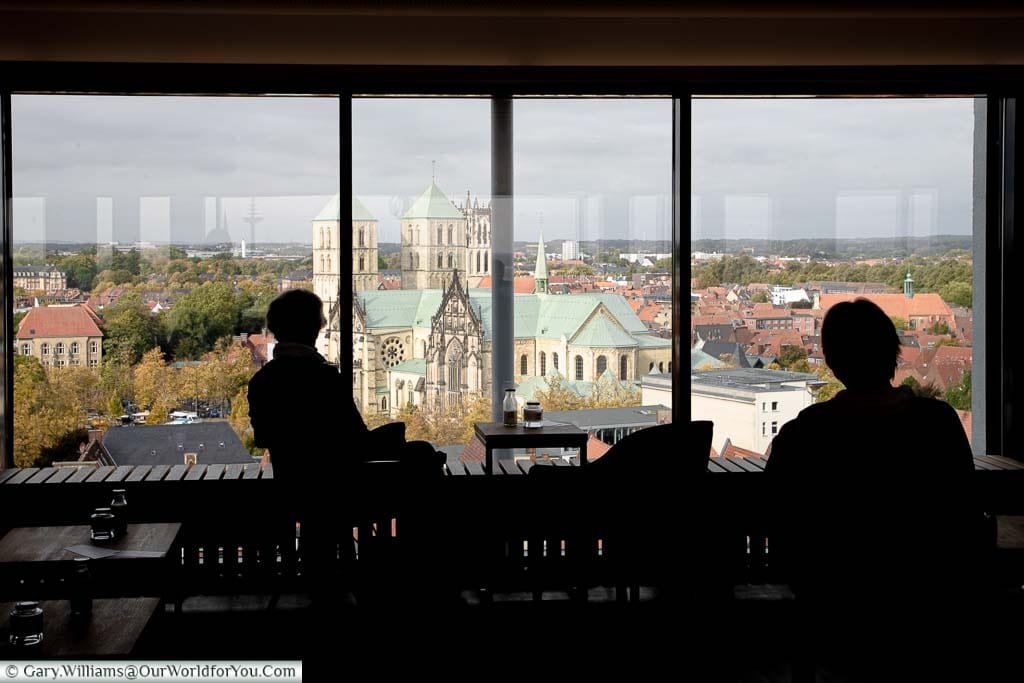
Discover Münster at Christmas
We were fortunate enough to return for the Christmas market festivities and they didn't disappoint.
The Christmas markets weave their way through the historic streets of Münster offering unique gifts and a very German yuletide experience.
Museums & Galleries in Münster
A little more culture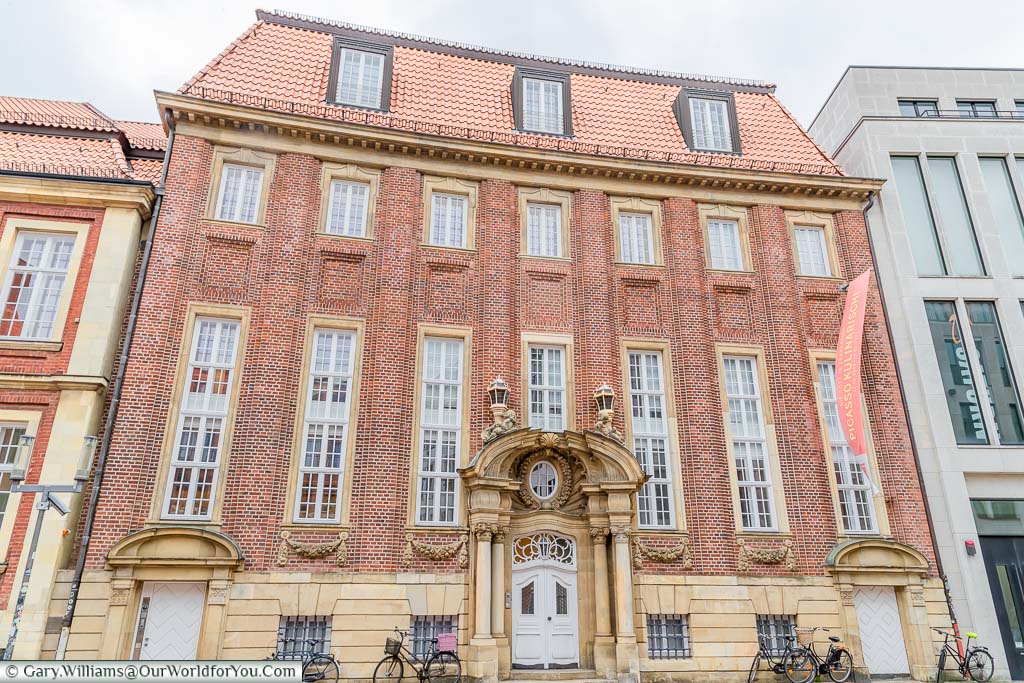
Head to the upper floor of the Picasso museum and take a peek out of the window, you’ll get a great view of Picasso’s head detailed in the paving stones below.
LWL - Museum for Art and Culture is another venue you can visit free with your Münster Card. It displays over a thousand years of art history, from the middle ages to today. The LWL Museum also has some wonderful exhibitions; unfortunately, we were too early for the Turner exhibit, which starts in November 2019.
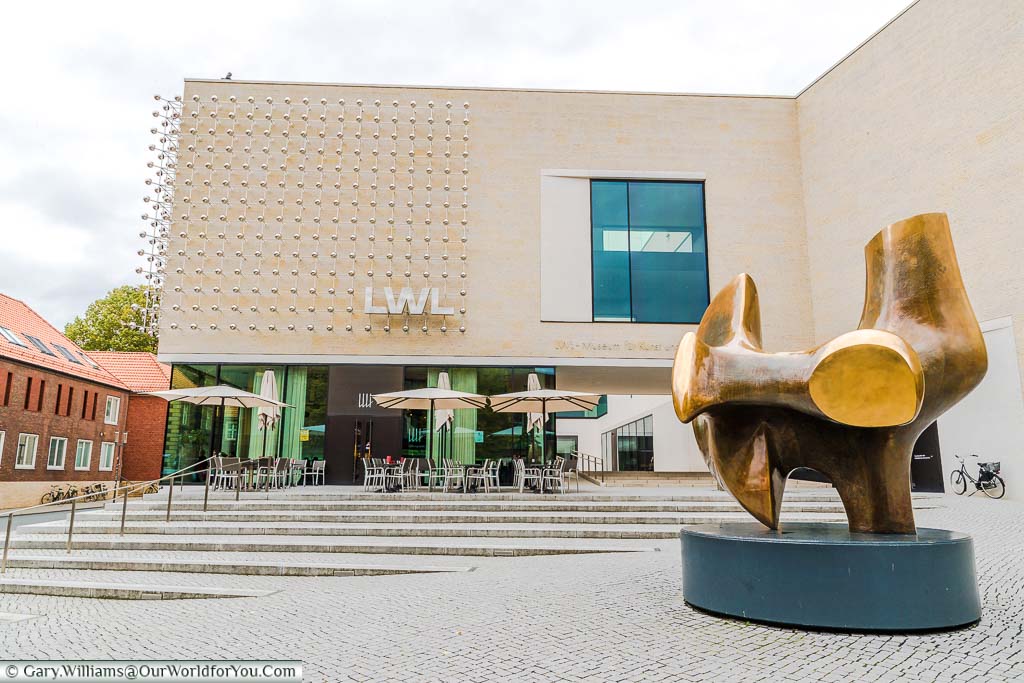
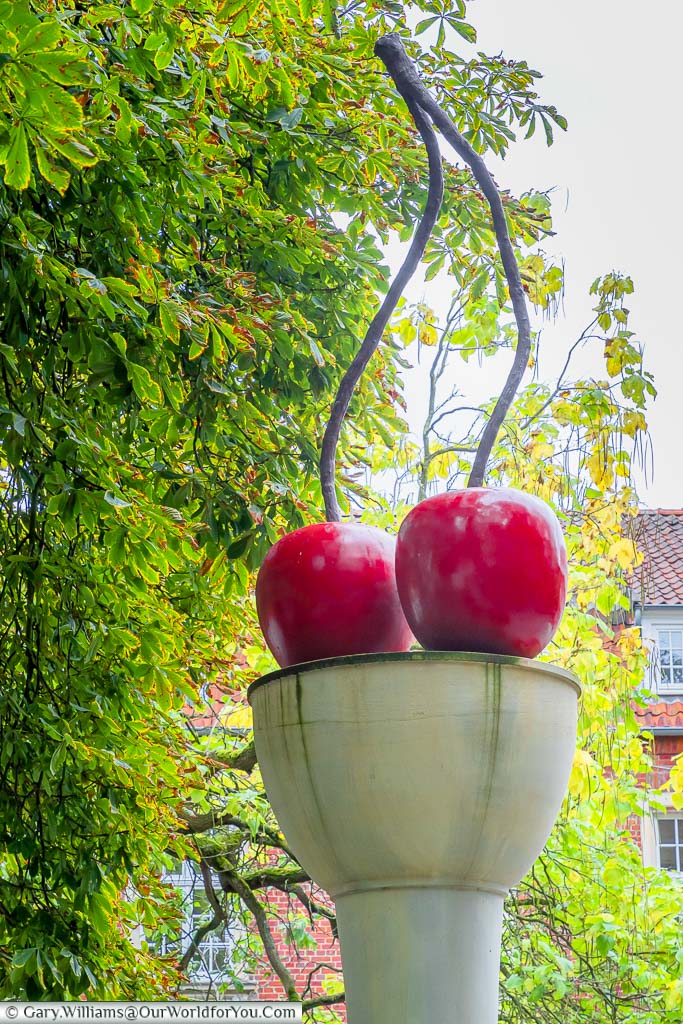
Discover for yourself
Places to visit in Münster
A little more cultureYou’ll find Münster to be a lovely compact city, and to me, this is part of its charm. However, there are always more to delightful qualities to keep an eye out for.
Firstly, the six carillons (glockenspiels) located around the town, there is the one I mentioned in the Dom. Another on Nonhoff House along Rothenburg but see if you can spot the others.
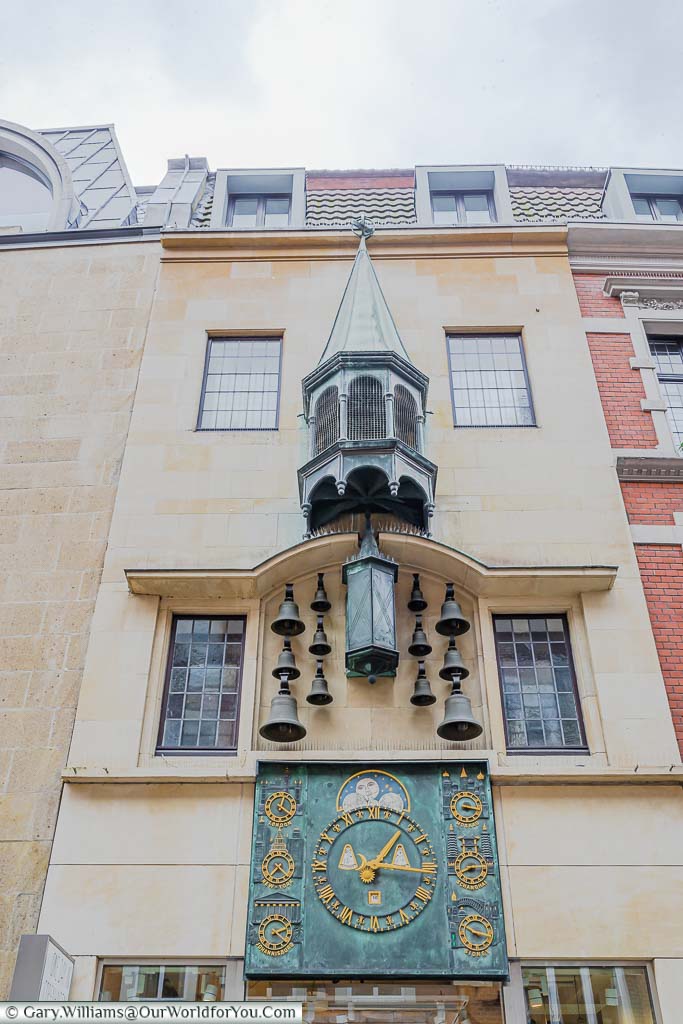
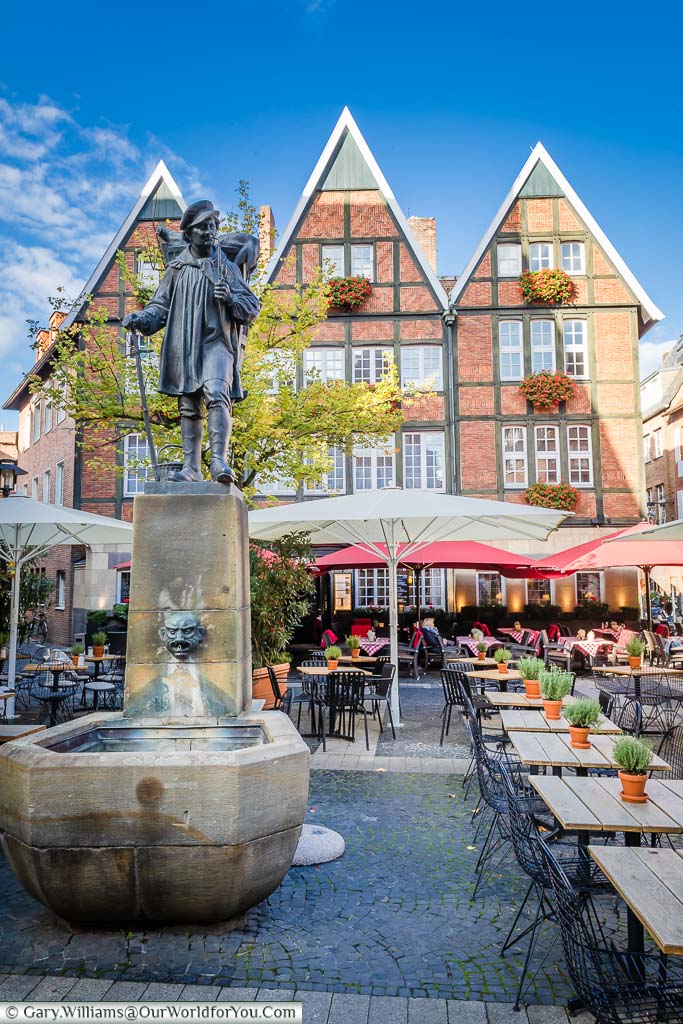
Also, the Kiepenkerl statue and fountain, located by Bergstrasse. This charming statue depicts the local roaming merchant in the Münsterland. They roamed from the town to the countryside carrying their laden down panniers, "Kiepe".
One thing that certainly will not go unnoticed during your visit to Münster is the number of bikes and how well the city has become very bike-friendly.
There are on average 2 to 3 bicycles per person in Münster, and lots of the streets are now for only bikes and public transport. They even have dedicated underground bike parks, just like a car park to keep your bike safe during the day.
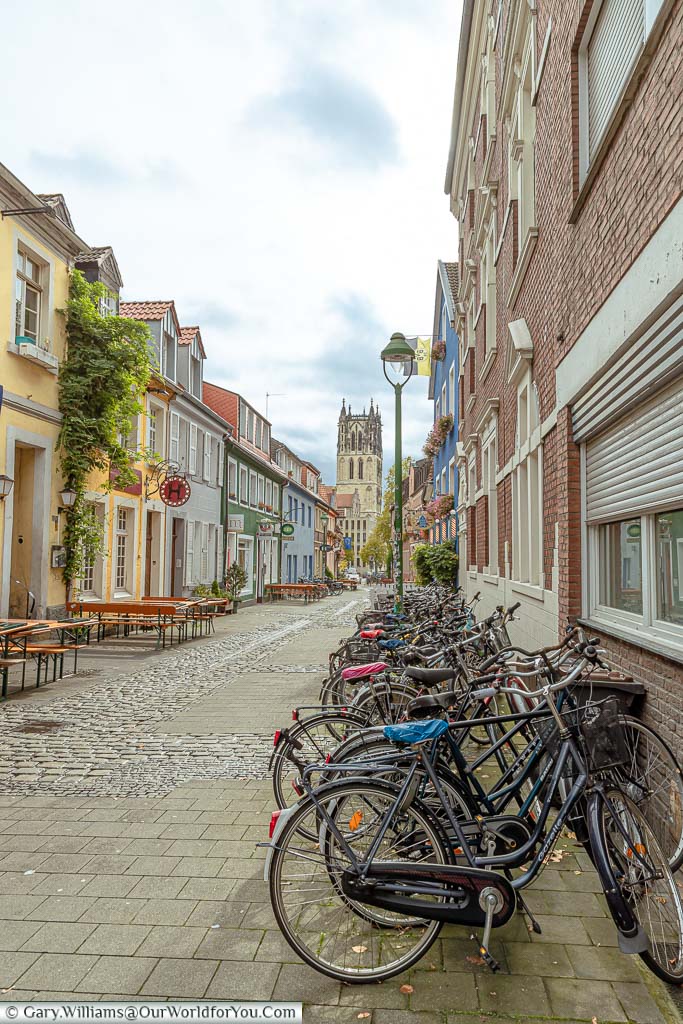
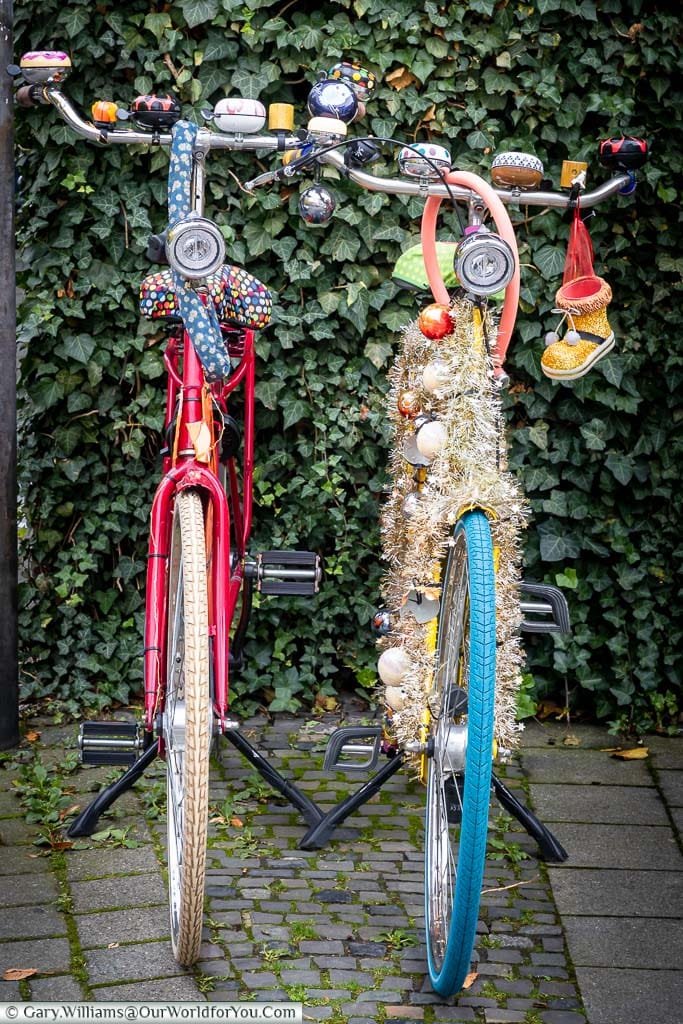
Our video from Münster
Our experience of the cityWe have created a little YouTube video of time in Münster - we hope you enjoy it.
Also, why not subscribe to our YouTube channel and get the latest clips as we post them?
Where to stay in Münster
Elegant & charming accomodation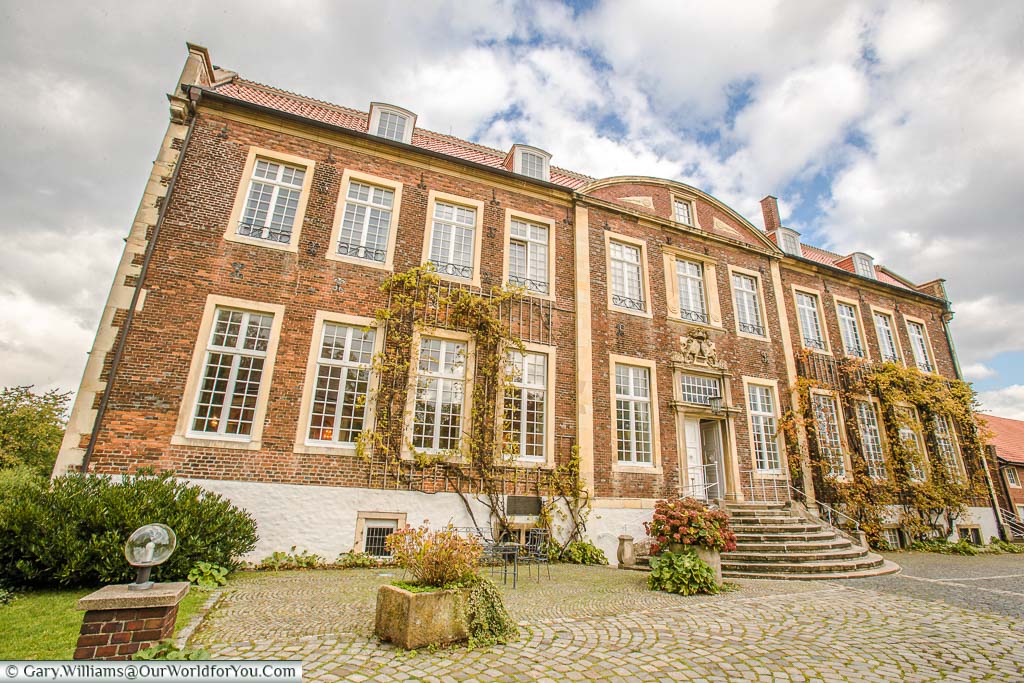
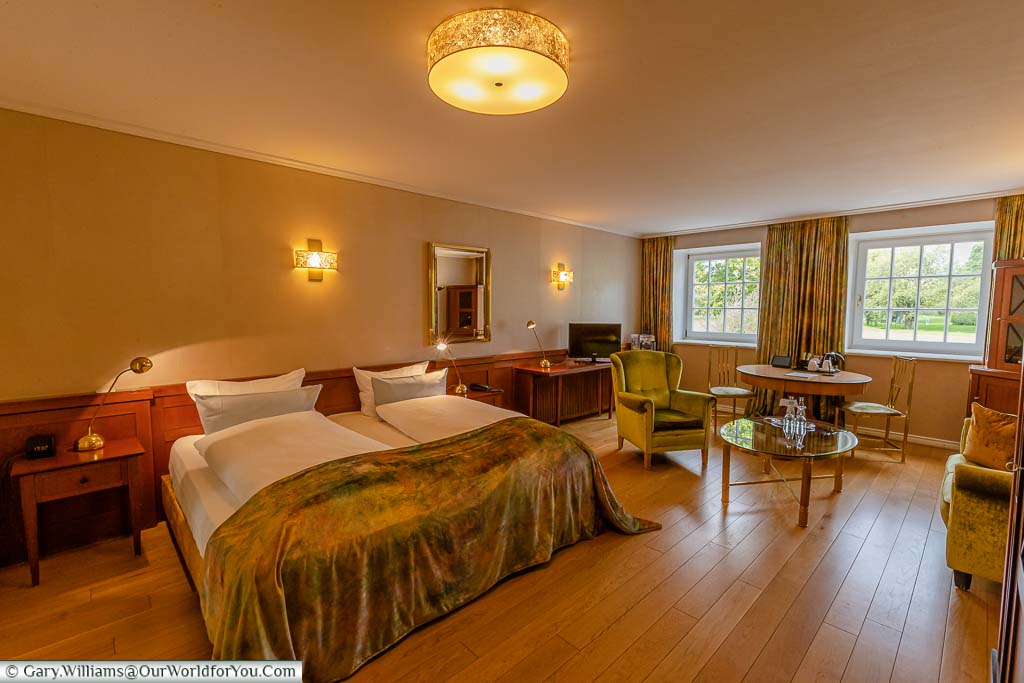
The staff were extremely accommodating and friendly.
The hotel is slightly out of the city centre, which was ideal for us, as there were ample free parking and only a 20 minutes bus journey into town.
The room was incredibly comfortable, clean & very peaceful.
There was plenty of room in the lounge area, and the desk was a good size, allowing us to set-up our charging station, and work comfortably on the laptop.
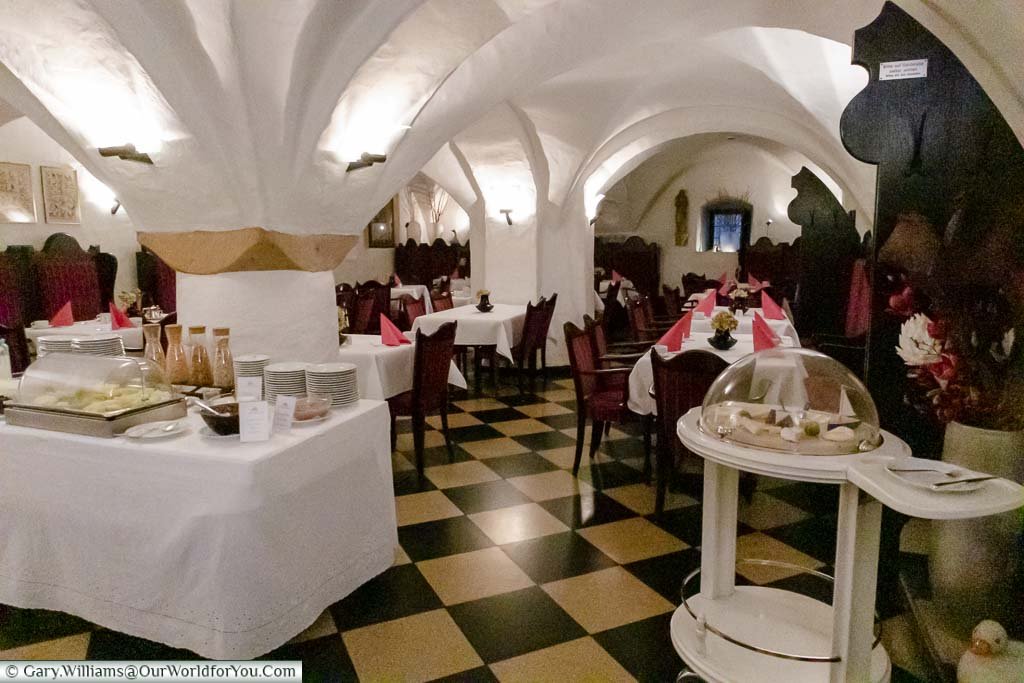
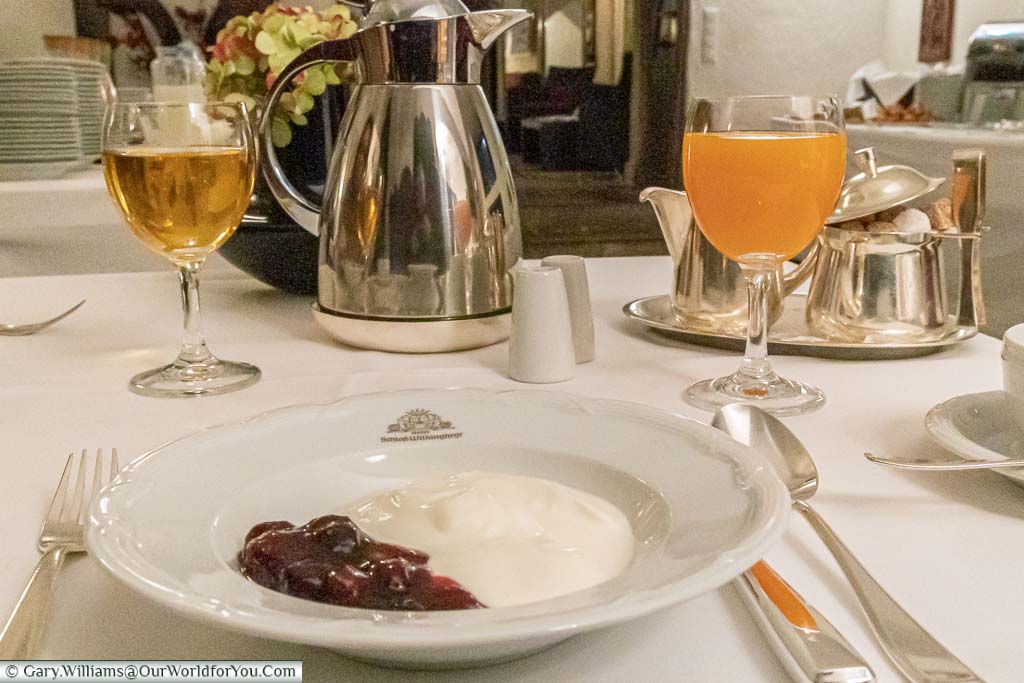
In Summary
Friendliness
All the staff that we met at this hotel were friendly, polite and accommodating.
A great experience.
Our Room
Breakfast
The breakfast room was located in the cellar, which was light and very comfortable.
Fresh coffee served at your table and an excellent buffet breakfast selection
Wi-Fi
Location
Parking
Where to eat and drink in Münster
Let's be traditional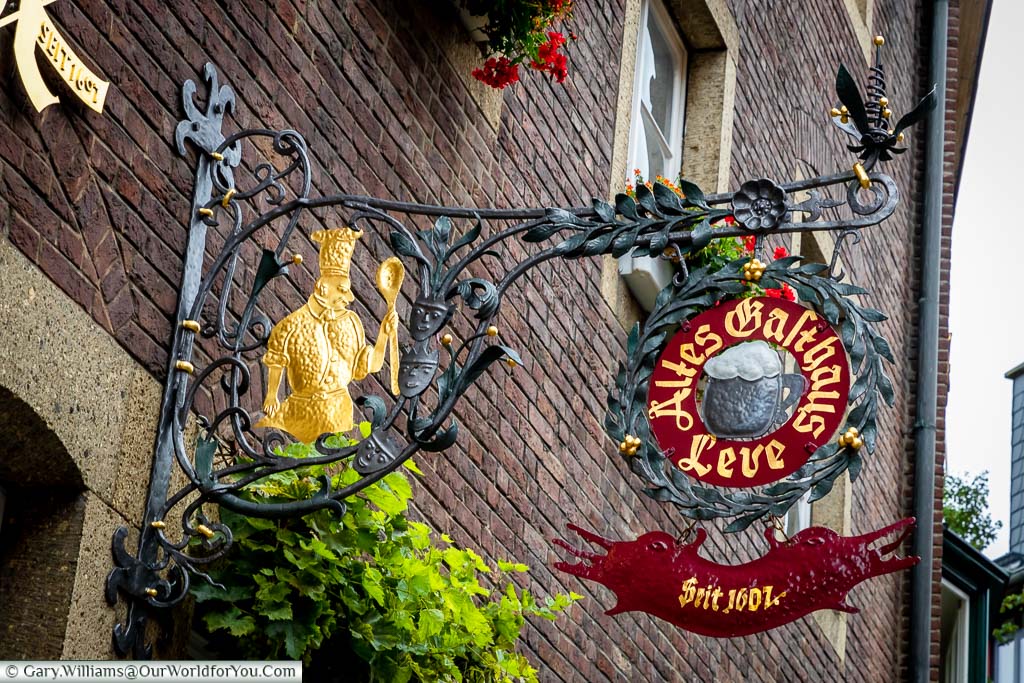
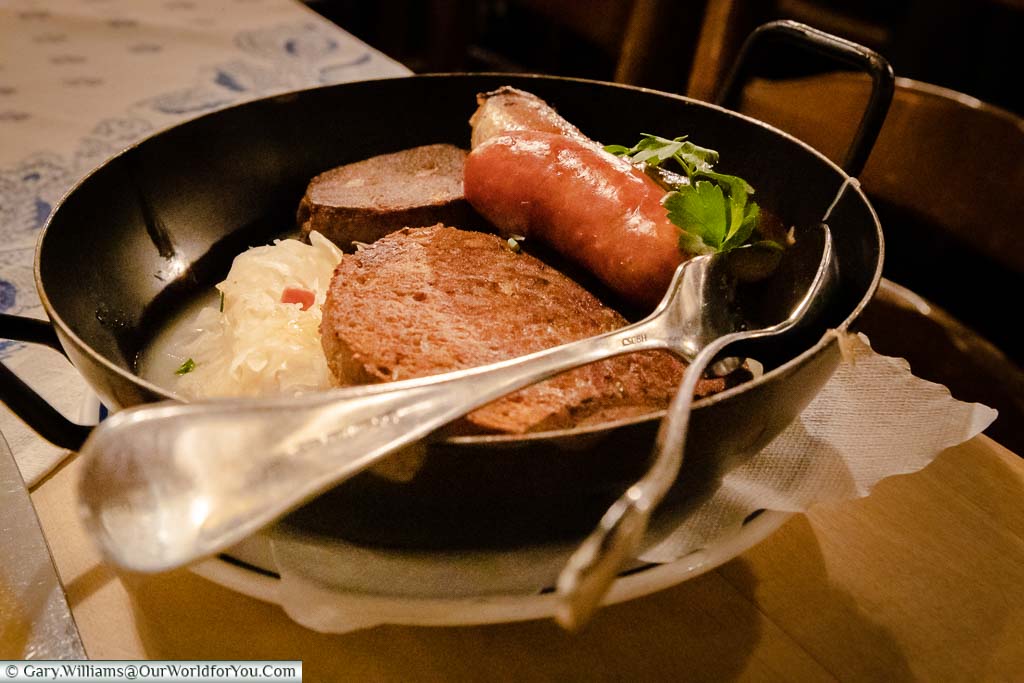
Münster’s local tipple
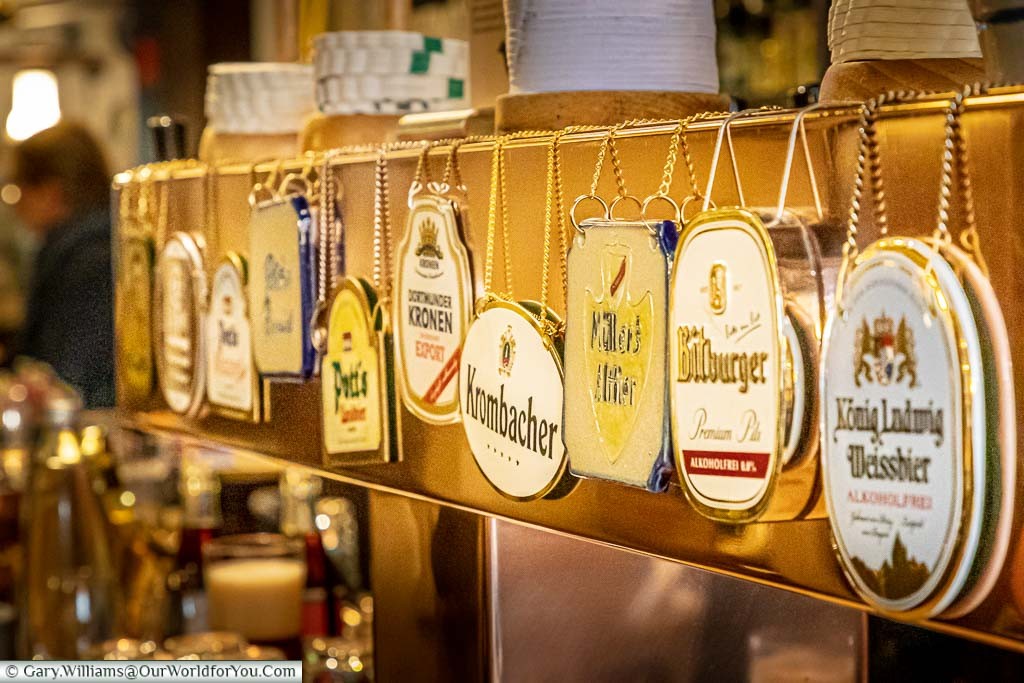
Our tips in summary
- Explore Münster oldest Inn - Altes Gasthaus Leve
- Take in stunning views at Café 1648.
- Enjoy the atmosphere at Gaststätte Töddenhoek
- Discover the Ratskeller
- Wander Kreuzstraße and pick a bar of your liking.
Disclaimer
* This post may contain links to affiliated sites where we earn a small commission at no additional charge to you.

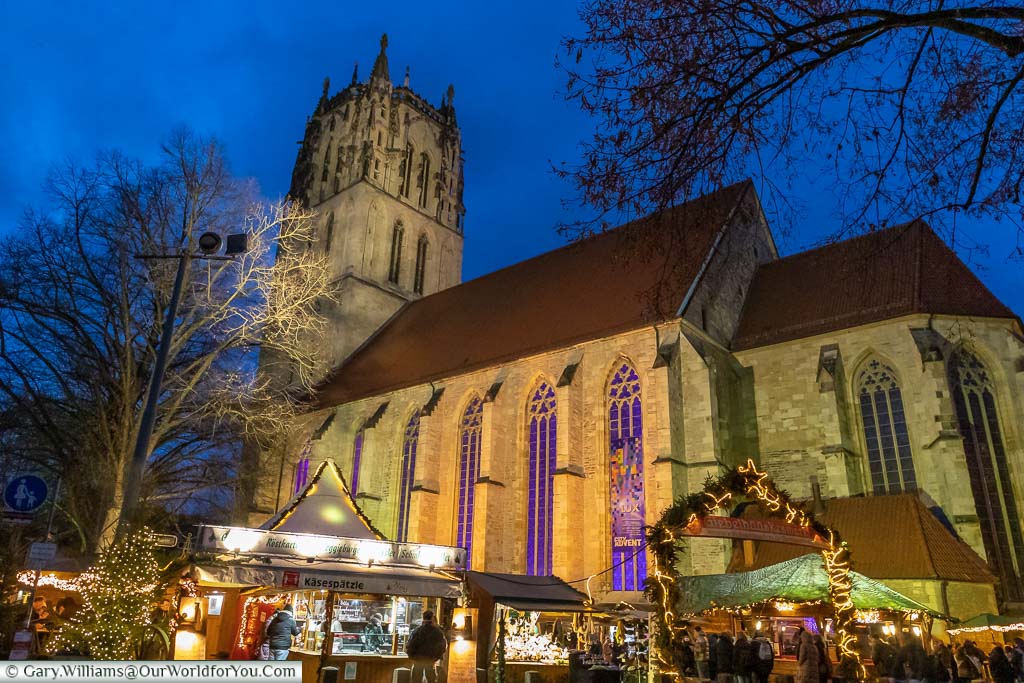

What a lovely German city to explore! I’m pinning this for future travel planning. I’m entranced by this German architecture!
Yes it was fantastic, lots of history, lovely architecture and really friendly people.
Great post, enjoyed reading it. Rococo so far up north? I was not aware. It’s a very popular style in Upper Bavaria. Looks like I’ll have to visit. My brother in law’s from there, so might combine this.
Thanks Stefan, we really loved the city, wonderful history. Apparently the Clemenskirche is locally known as the Bavarian church. Which town is your brother-in-law from?
Haha.. how cool that they actually do call it Bavarian church. My brother in law and his whole family are directly from Munster, but he and my sister now live near Ulm with two of their three kids (one studies in Munich).
Oh, they’ve headed south. Munster is most definitely worth a visit if you are around there, it’s really lovely and some interesting history.
I’ve never heard of this town, but how wonderful! #Farawayfiles
It was a fascinating place to explore and the city had some really interesting and unusual history.
Great post with beautiful photos and interesting facts. I have saved it for future reference. Munster is added on to my list. I was shocked to read the about gruesome cage history of the church. Enjoyed reading this post with detailed information. #farawayfiles
Thanks very much for your comments. Munster is definitely worth visiting, it’s a lovely small city and as you mentioned some strange tales.
I’m fascinated to read about the woman who blows the horn from the top of the church nearly every night. I bet it’s cold up there in the winter! And two to three bikes per person makes it quite a bike city too! A really interesting read for #farawayfiles.
Yes, when we chatted to the Tower Keeper, she said that she has to go out come rain or shine. Martje said that it can get quite icy up there in the winter too (I don’t think I could do it). However, she absolutely loves her job and very proud of it.
I would definitely go on a walking tour in this city. There is so much history and I love the architecture.
Yes, it was really worth it, we found out so many tales and facts about the city. It’s lovely size place to stroll around too.
I never considered visiting Münster, but you’ve certainly made it look appealing! Much prettier than I had imagined, and I love those lamps! They have lamps like that in Heppenheim! #FarawayFiles
Yes, it was a lovely city, nice and compact and lots of history. We were in Heppenheim earlier this year and noticed all their street lamps.
What a charming city! I especially love how bike-friendly it is, and that there are underground bike parks! That’s pretty awesome! Thanks for linking up with #farawayfiles
Yes it was a amazing how bike friendly it was, it was like being in the Netherlands. Highly recommend a visit.
I was lucky enough to spend 3 years living there, first in Roxel then Coerde, when in the Army. Beautiful city, friendly people, looking to go back next year. The Xmas market is always worth a visit as is the Aasee (the lake in Munster) in the summer, good pub there as well! Probably the best posting in 24 years!!
Oh wow, that is interesting. We loved how friendly the people were too, and as it is a reasonably small city it felt like they really cared. We are definitely considering visiting at Christmas time, perhaps next year, we love a German Christmas market so any excuse to head back.
Have a great time when you return.
Dear Janis and Gary, I am so glad to read you enjoyed your visit to „my“ city and want to leave a big THANK YOU for your kind visit on the tower of St. Lamberti church to join me and listen to the towerkeeper‘s traditional horn signals!
May your journey continue safely and please come back some time to visit our Christmas markets!
Martje, towerkeeper of Münster
Thanks very much Martje for your kind comments, we loved our time in Münster and watching you continuing on the citiy’s tradition was the highlight of the trip.
We really hope to return for the Christmas markets, fingers crossed it will be 2020.
i went there, and whole sightseeing placed i covered by walk. Even our guide explored everything, we were happy with service. Thank you for sharing such beautiful photos with your post.
Thanks for the lovely comments. Yes, it’s a great place to discover on foot and some beautiful architecture.